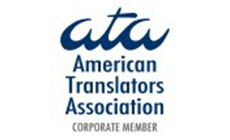
Transcription
Transcription is the conversion of speech to written text. This service is most commonly carried out for our NGO clients who for example, may have recorded interviews from their field offices that they wish to have converted to written format. It is common for these to be subsequently translated into other languages for multimedia use, such as subtitling, which is a service we also carry out. In these and other settings, the client is asked what the transcription is intended to be used for, and through this, it is determined if the speech should be transcribed verbatim or if slang or other nuances should be avoided. Transcription is provided on a standardised template indicating the start and end of speech in specified time intervals.
Subtitling
Subtitling is part of a broader field of audio-visual translation that in many cases leads on from transcription. This service must be carried out by an experienced linguist who is proficient technically in this specialist field and who works with the software required to provide this service.
There are two complexities that the linguist deals with:
1) as industry standard, the space for subtitles is limited to two lines
2) a subtitle has a minimum duration of a second and a maximum of 6 seconds on screen, but there is a direct relation between the duration of a subtitle and the number of characters it can contain so that it can be read comfortably.
Subtitles are inserted into the correct place in the audio, a process known as simulation, and it is exported to whichever extension the client requires. As standard, we can provide a bi-lingual table of the original subtitles and translation, as well as a time-coded .SRT file containing the subtitles themselves when requested.
Voiceovers (VO)
When it comes to choosing VO artists, our experience allows us to assess, in the absence of any guidance, what would best suit the client’s message and image. To reduce costs, we find it advisable to choose two artists, one male and one female, or three if a more conversation-style is desired, depending on the target audience and if there are any dialects or tone to consider. As standard, we always provide clients with a sample of voices to choose from. We use specialist ADR-Software to create a voice-over script allowing us to exactly time voiceovers to the source material. In cases where the voiceover is not the same as the source language, care needs to be taken to ensure a language longer than the source doesn’t exceed its permitted length. We then send the script to the VO artist who records the audio which is then mixed and digitally mastered. Our technical team ensures that the audio is clear and any additional parameters such as background soundtracks are suitable and of the correct sound level. This is done using professional post-production software.








